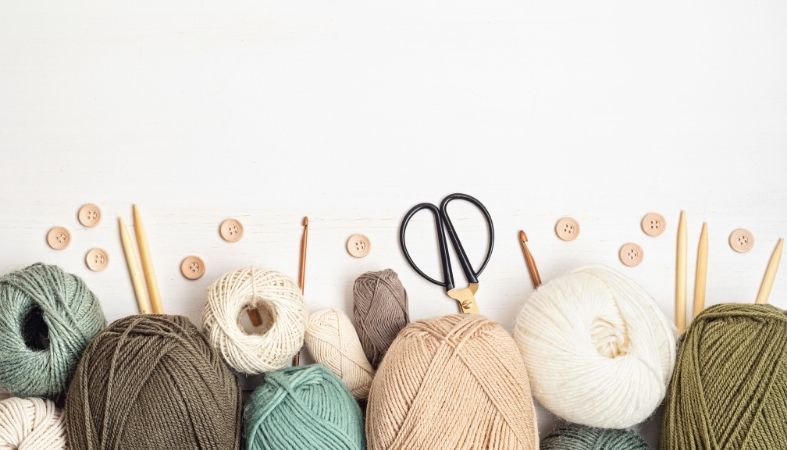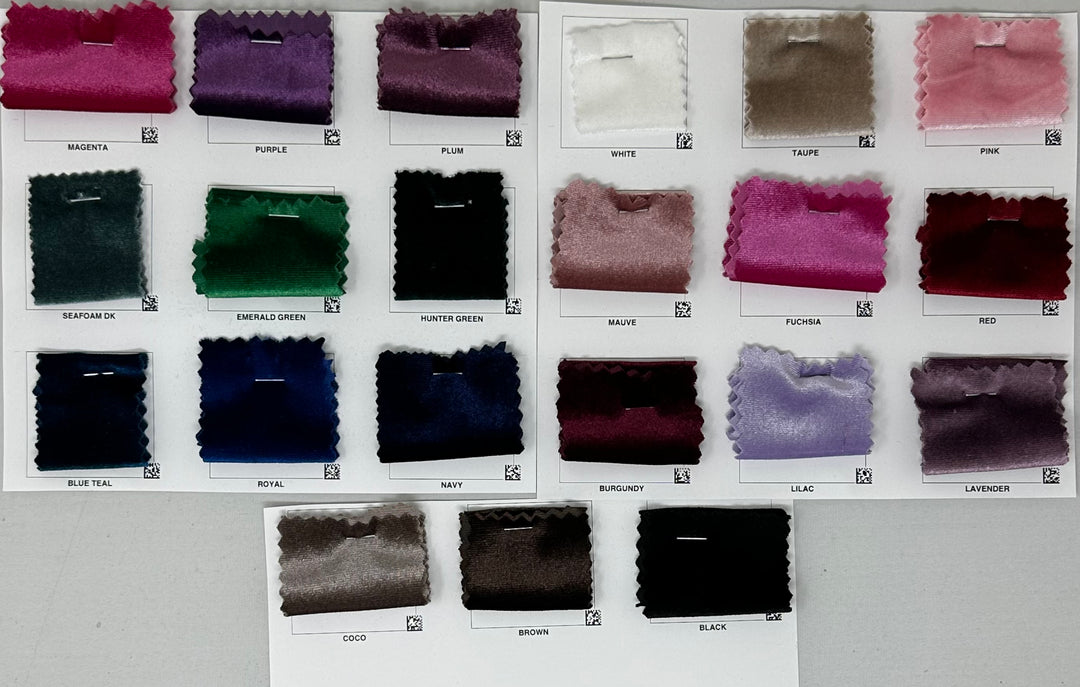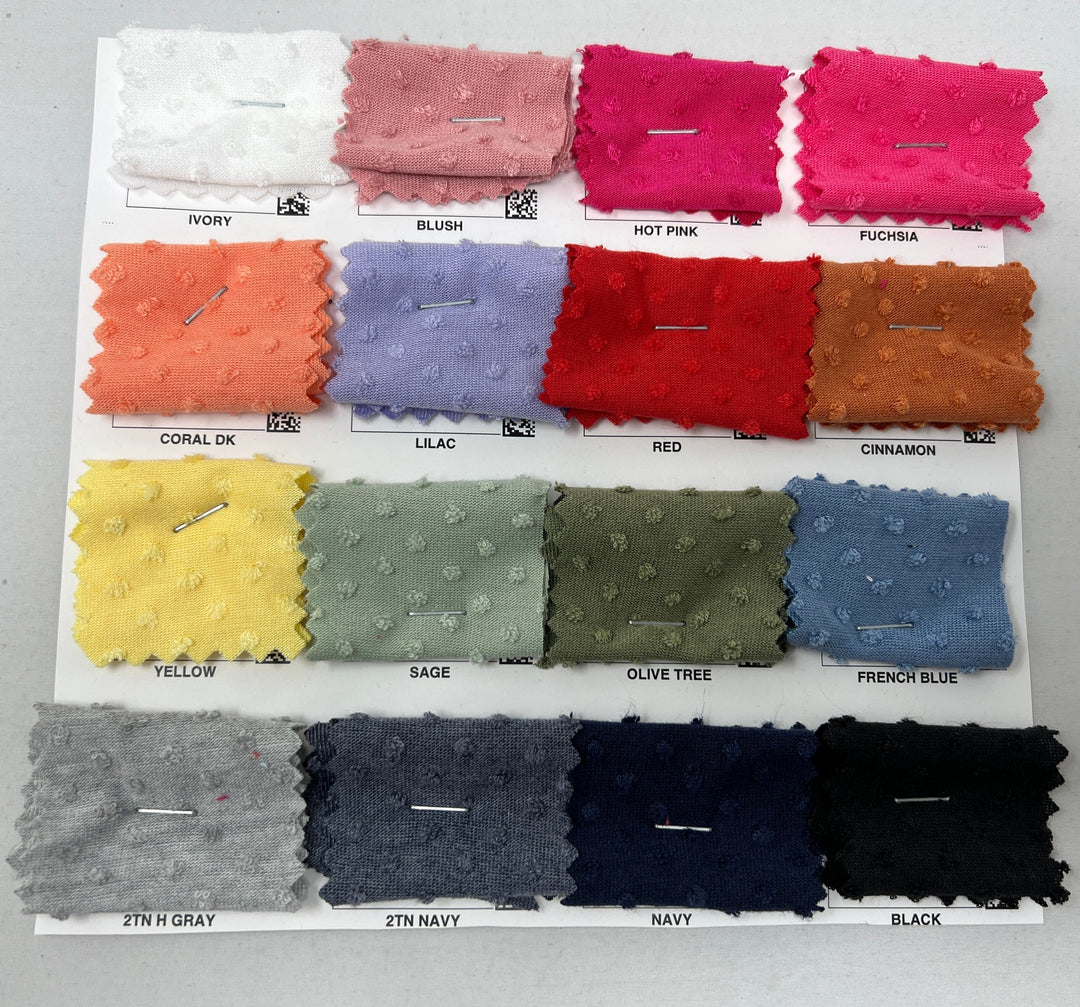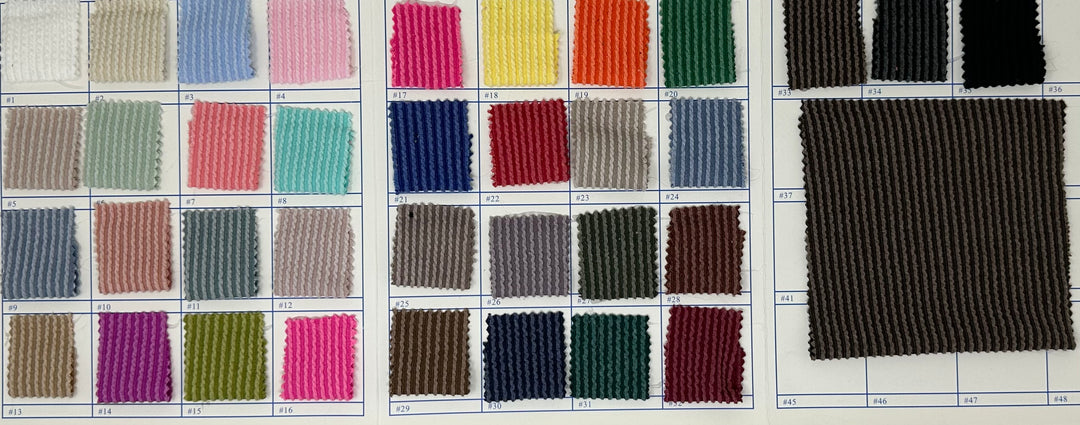What To Know About Working With Knit Fabrics


Knit fabrics are a fantastic option for athleisure and comfort clothing lines alike. The flexibility, softness, and breathability factors all lend themselves to garments like leggings, scrunchies, even wrap skirts. That said, knit fabrics have unique needs from the bolt to the clothing rack. Here’s what to know about working with knit fabrics before you choose them for your next project.
The Fabric You Choose Matters
The first step in working with knit fabrics is to choose a knit that matches your project. While all knits share a similar structure, their characteristics and appearances all differ. The material you choose impacts how the garment is worn and the message it sends.
Characteristics
The characteristics of each knit fabric type are crucial for any tailor or designer to consider before making their choice. The stretch, weight, and drape of a given fabric determine how it will lay against and move with the body and how it feels for the wearer. For example, jogging wear needs added breathability and more generous stretch than a summer dress that needs to drape beautifully. Consider the projects you have in mind before choosing.
Appearance
Each knit fabric type also has a unique appearance beyond the fabric’s print or dye. Liverpool knit fabric, for example, is a consistently textured fabric that, from a distance, appears smooth. This subtle texture makes it ideal for floral prints and similarly complex patterns. If you want to create a bolder clothing line, wholesale bullet fabric is a more suitable option. While bullet knit fabrics can still boast impressive patterns, it’s the immediately obvious texture that sets this fabric apart and makes it perfect for statement pieces.
Proper Tools for Getting Started
One thing to know about working with knit fabrics is that using standard sewing tools can cause issues in the final garment. Unlike other fabrics, knits are comprised of thousands of loops in the thread that allow it to achieve its iconic stretch and drape. Standard tools damage a knit fabric’s unique structure in a variety of ways that are, unfortunately, all too visible in the final product. Let’s explore some of the proper tools for getting started with your hand-sewn knit fabric garment.
Pins, Clamps, and Clips
Your sewing notions play a key role in keeping your knit fabric healthy and functional. Knit fabric is far from stiff, so using tools for piecing is unavoidable. However, if you use sharp pins that work on standard cotton, you risk cutting the knit’s loops and creating an obvious hole in the final, stretched garment. Ballpoint or blunted pins are an option to help you slide through the loops instead of tearing them.
Fabric clamps and clips are a pin alternative that avoids going through the fabric altogether. However, the downside of most clips is that they can get in the way as you maneuver the fabric into the machine. Lightweight clips with a small profile are perfect for keeping your fabric in place without getting in the way.
Needle and Thread
Ballpoint pins are important for getting started, but ballpoint needles are necessary for finishing the project. Ballpoint needles serve the same function in that they pass between the thread loops of the fabric and avoid the tearing that universals and sharps are known to cause. Stretch needles are less rounded than ballpoint needles, but they are ideal for gliding into elastic-like fabrics.
Polyester all-purpose thread is among the best options when dealing with knit fabric. However, as long as a thread has some stretch and durability, it’s up for the task. Remember to also replace the thread in your bobbin with a thread of similar durability.
The Right Stitch for the Job
The type of stitch you use has a significant impact on your success when using knit fabric. If you don’t have a serger or overlock machine, you have to go beyond straight stitches and adapt to a material that wants to move.
Zigzag stitches, for example, can handle the stretch of fabric fairly well as you pull on and wear the garment. This classic stitch is a great choice for seams and hems where the zigzag pattern is familiar and won’t appear unprofessional. Narrow zigzag stitches can also tolerate the pull of flexible fabric but are less secure. If you notice that the fabric tends to pucker, a 3-way zigzag can easily solve that issue.
Stretch stitches implement a similar loop to the fabric itself. Going back and forth allows the stitch to expand and return with the fabric. Sewing machines have a wide array of stretch stitches to choose from, often including the variety of zigzag stitches mentioned previously. Overlock stitches or stretch overlock stitches are two options that give your thread some extra staying power.
When choosing a stitch for your project, always test the stitch on a fabric patch beforehand. This practice run allows you to calibrate your machine’s speed and strength, while also finding the stitch that works best with the stretch of your particular knit.
Combating Wavy Stitches
Wavy stitches cause many tailors to stray away from using knit fabric. Luckily, there are a few easy ways to keep both your stitches and the fabric moving consistently and correctly as you work.
While most sewing machines have feed dogs (teeth that grip the fabric as it passes beneath the needle) in the throat plate, using a walking foot attachment adds an additional set of feed dogs above the fabric. This change adapts your sewing machine to better handle a fabric that’s inclined to shift or stretch as it’s moved.
One last way to make a knit fabric more cooperative is to stabilize the fabric using tissue paper. Place tissue paper between the fabric and the feed dogs on the throat plate to give your machine an improved grip and lessen waviness in the stitch. Gently tear away the tissue paper once you finish the section or piece.
How To Launder Knit Fabric Garments
You can machine-wash almost all knit fabrics in cold water and machine-dry them on a low-heat setting. However, if you’re concerned about the stability of any stitchwork or working with an especially precious fabric, handwashing is a safe alternative. Fill a sink or tub with cool water, add a small amount of delicate shampoo, and rinse the fabric through until the soap is gone.
At Express Knit, we’re happy to help you through your search for the perfect fabric. Our collections include a wide variety of knit fabric types, prints, and styles to suit any aesthetic. We also offer wholesale options for designers starting new clothing lines or expecting a long run of a particular garment or accessory. Feel free to contact us today to learn more about the products we offer and how our team can help solve your knit fabric sourcing problems!


















